Analysis of Control Cable Technology
Control cable is a type of cable used for transmitting control and measurement signals, mainly used for long-distance operation, control, and signal transmission in industrial and mining enterprises, energy and transportation departments, modern high-rise buildings, and other fields. The purpose of controlling cables is to ensure the normal operation and safety protection of equipment, therefore there are high requirements for their performance and quality.
The structure of control cables generally consists of conductors, insulation, shielding, sheathing, and armor. The conductor is the main part of the cable, usually made of copper or aluminum as the material. Depending on the purpose, solid or stranded wires can be used. The insulation layer is the core part of the cable, using insulation materials such as polyvinyl chloride and polyethylene to ensure the electrical and mechanical properties of the cable. The shielding layer is mainly used to prevent electromagnetic interference and signal leakage, and is generally woven with copper or aluminum wire. The sheath layer is the outer protective layer of the cable, which is made of materials such as polyvinyl chloride and polyethylene to prevent mechanical damage and environmental erosion of the cable. The armor layer is mainly used to enhance the mechanical strength and tensile strength of cables, usually using steel wire or steel strip.
The main performance of control cables includes electrical performance, mechanical performance, and environmental performance. Electrical performance includes conductor resistance, insulation resistance, withstand voltage strength, etc; Mechanical properties include tensile strength, elongation, bending performance, etc; Environmental performance includes temperature resistance, cold resistance, oil resistance, corrosion resistance, etc.
The application range of control cables is very wide, and they can be applied in fields such as power, communication, transportation, and chemical engineering. In the power system, control cables are commonly used as grounding wires for high-voltage transmission lines and connecting wires for electrical equipment; In the field of communication, control cables are commonly used for signal and data transmission; In the field of transportation, control cables are commonly used in signal transmission and control systems of rail transit such as railways and subways; In the field of chemical engineering, control cables are commonly used for signal transmission and control in harsh environments such as high temperature and corrosion.
In short, control cables are an important type of wire and cable product, and their performance and quality directly affect the normal operation and safety protection of equipment. With the continuous development of technology and the expansion of application fields, control cables will be more widely used and developed.
National Service Hotline
0319-5898988
Website:bdrxn.cn
Email:zhongguojinchao@126.com
Address:No. 8 Huancheng North Road, Ningjin County, Hebei Province

official account









